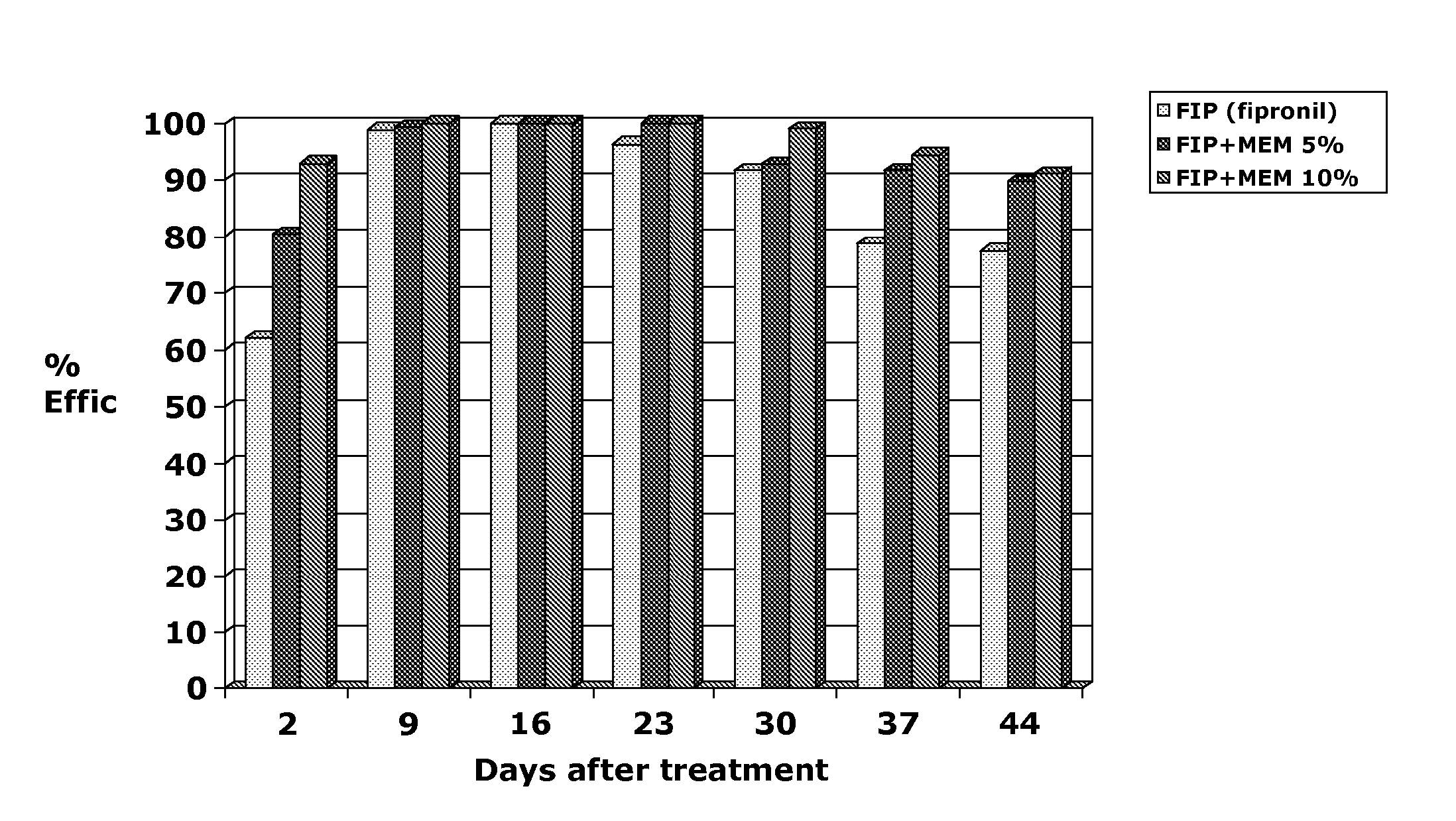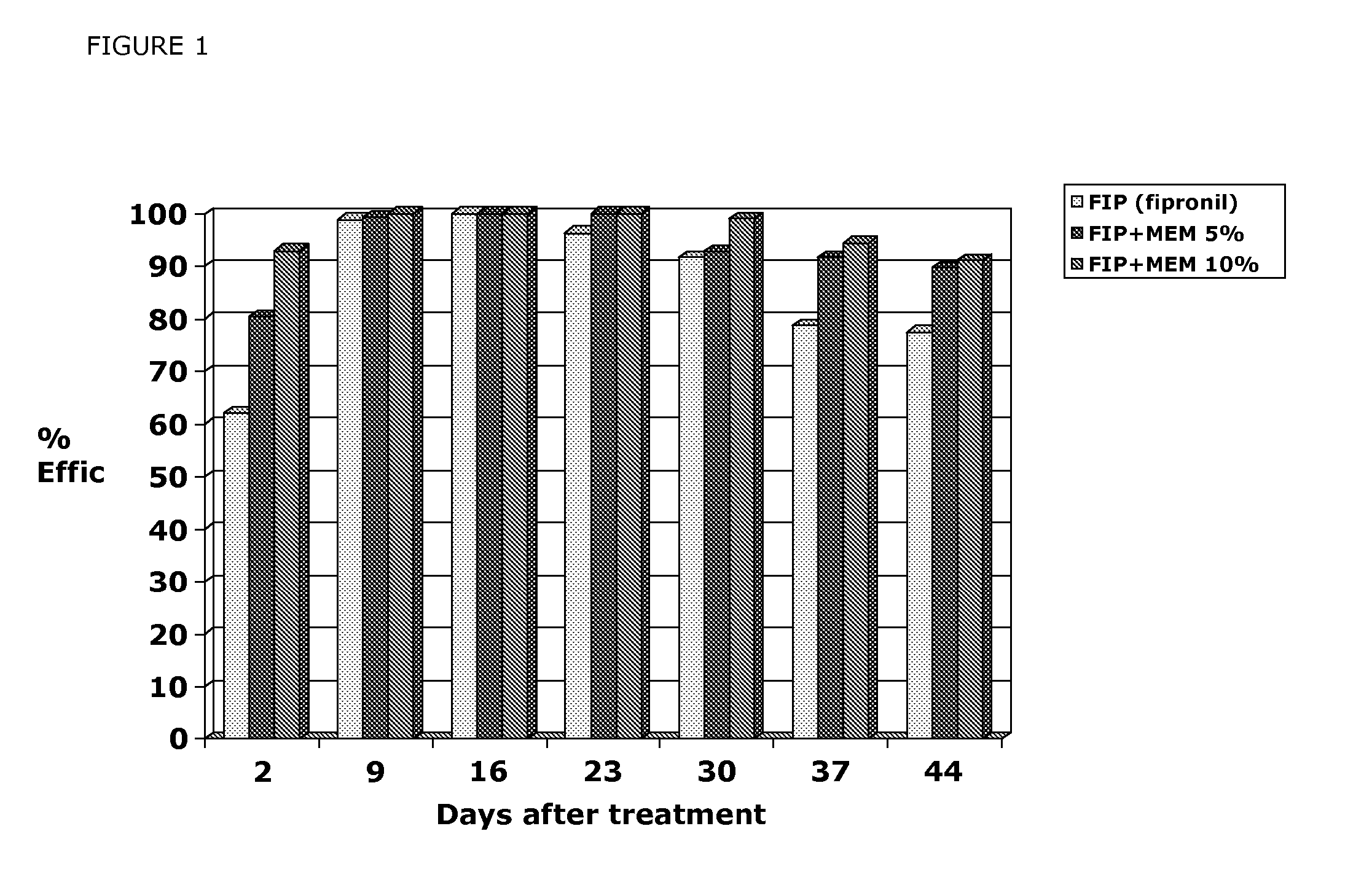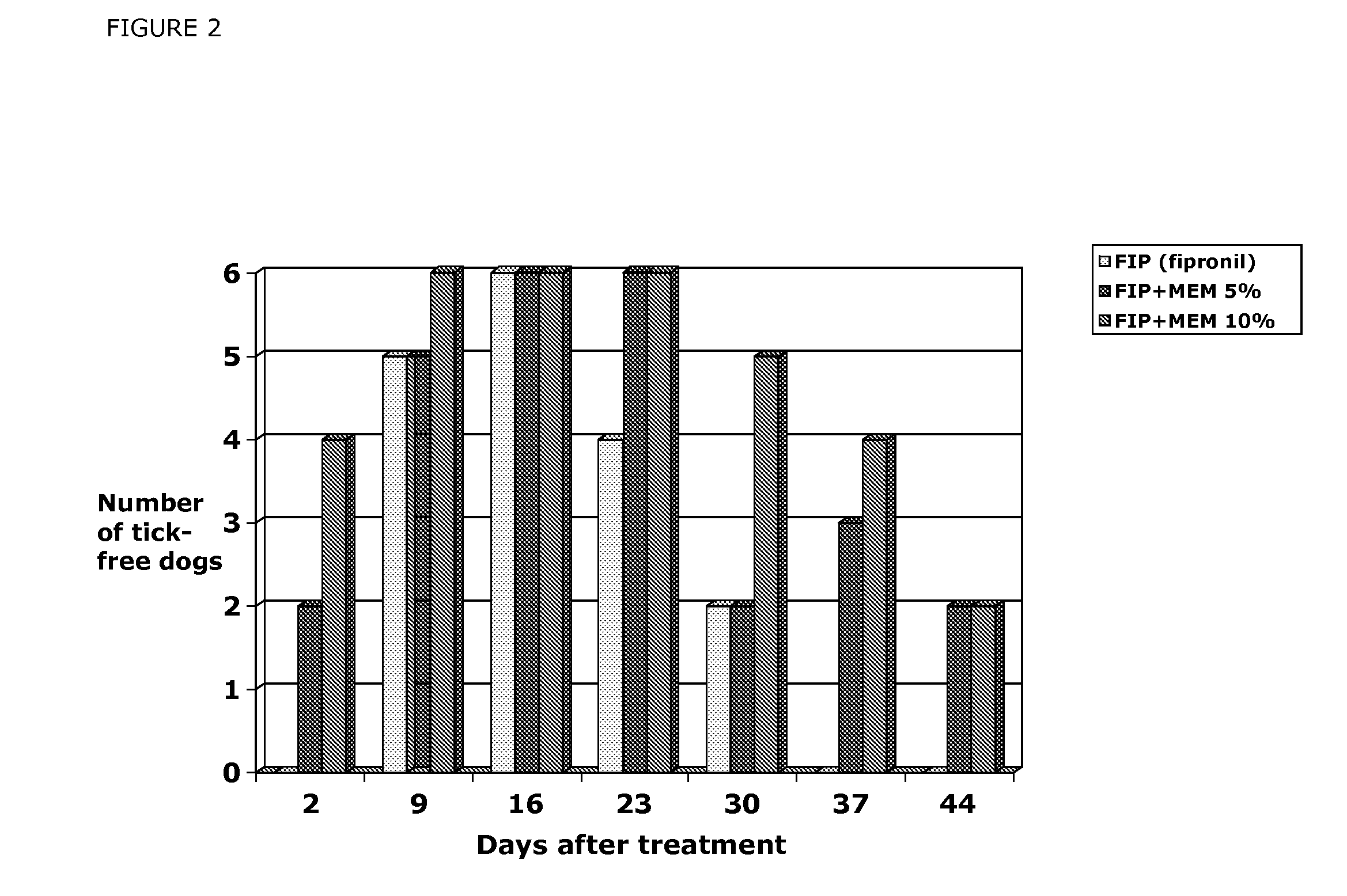Compositions comprising C-13 alkoxyether macrolide compounds and phenylpyrazole compounds
- Summary
- Abstract
- Description
- Claims
- Application Information
AI Technical Summary
Benefits of technology
Problems solved by technology
Method used
Image
Examples
example 1
Synthetic Procedure for Making a MEM derivative of Ivermectin
[0602] The MEM derivative of ivermectin has the following formula:
wherein R16=—CH2CH3 for the B1a form and R15=—CH3 for the B1b form.
[0603] In order to synthesize the MEM derivative of ivermectin, the disaccharide moiety at the C-13 position of ivermectin is cleaved by acid solvolysis using a 1% acid solution to effect cleavage to the ivermectin aglycone. The —OH groups at C-5, C-7 and C-13 are then protected with t-butyldimethylsilyl chloride (TBDMS) and then subsequently protected with trimethylsilyl chloride (TMS) to obtain the 7,13-bis-O-TMS-5-O-TBDMS ivermectin aglycone.
[0604] The 7,13-bis-O-TMS-5-O-TBDMS ivermectin aglycone is then selectively deprotected using dichloroacetic acid to obtain the 7-O-TMS-5-O-TBDMS ivermectin aglycone. This aglycone is then alkylated with 2-methoxyethoxymethyl chloride (MEM chloride) and subsequently purified via crystallization to obtain the 13-MEM-7-O-TMS-5-O-TBDMS ivermectin ag...
example 2
Efficacy of MEM Derivatives of Ivermectin Against Fleas
[0607] Two Ivermectin derivatives (Formula (III) and Formula (IV)) were tested for their efficacy against fleas on male dogs. Twenty female and 16 male dogs of various breeds and weighing 9.3 to 21.6 kg were used to show the efficacy of compounds of formula (III) and Formula (IV) against fleas. Dogs were allocated to treatment by restricted randomization based on pretreatment (Day 0) flea count. Treatments were vehicle control, compound of Formula (III) in a 1.5% or 2.5% solution applied topically at 1 ml / kg to provide a dose of 15 or 25 mg / kg, compound of Formula IV in a 1% or 1.5% solution applied topically at 1 ml / kg to provide a dose of 10 or 15 mg / kg. Dogs were housed individually in cages or indoor runs. Each dog was infested with 100 fleas (Ctenocephalides felis) on Days −1, 13, 20 and 27. Flea counts were performed by manually parting the dog's hair and counting the number of live fleas observed (so-called “thumb counti...
example 3
Efficacy of MEM Derivatives of Ivermectin Against Sarcoptic Mangae
[0609] Two Ivermectin derivatives (Formula (III) and Formula (IV)) were tested for their efficacy against Sarcoptic Mange on male dogs. Twenty-three crossbred dogs and one Heeler (Australian Cattle Dog), weighing 2.9 to 20.0 kg, with estimated ages ranging from 3 months old to 7 years, and naturally infested with Sarcoptes scabiei var canis, were used to compare the efficacy of compounds of formulas (III) and formula (IV) applied topically according to the multiple point application system. There were 12 male dogs and 12 female dogs.
[0610] Dogs were individually kennelled. Replicates of four dogs were formed based on animal availability and mite counts; within replicates, dogs were randomly allocated to a vehicle-treated (L-930,870) group or groups which received compound of Formula (III) at 15 mg / kg body weight or compound of Formula IV at either 10 mg / kg or 15 mg / kg at a dose volume of 1 ml / kg. The investigator wa...
PUM
 Login to View More
Login to View More Abstract
Description
Claims
Application Information
 Login to View More
Login to View More - R&D
- Intellectual Property
- Life Sciences
- Materials
- Tech Scout
- Unparalleled Data Quality
- Higher Quality Content
- 60% Fewer Hallucinations
Browse by: Latest US Patents, China's latest patents, Technical Efficacy Thesaurus, Application Domain, Technology Topic, Popular Technical Reports.
© 2025 PatSnap. All rights reserved.Legal|Privacy policy|Modern Slavery Act Transparency Statement|Sitemap|About US| Contact US: help@patsnap.com



